2021 Ford Escape Plug-In Hybrid 7 Things We Like and 4 Things We Dont

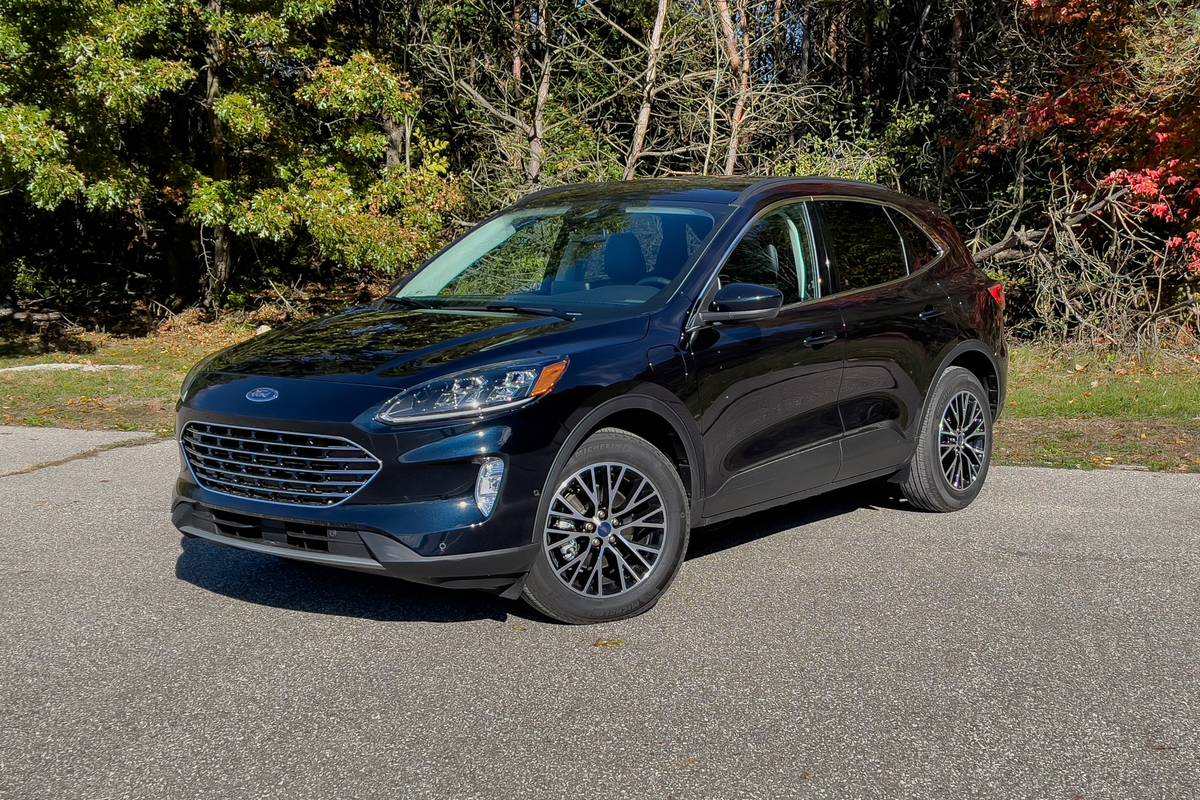 2021 Ford Escape Plug-In Hybrid | Cars.com photo by Aaron Bragman
2021 Ford Escape Plug-In Hybrid | Cars.com photo by Aaron Bragman
By Matt Schmitz
January 27, 2022Share
On the surface, a plug-in hybrid seems like a no-brainer for anyone who wants an all-electric vehicle for their daily commute but fears running out of juice with a charging station nowhere in sight. Like all PHEVs, the Ford Escape Plug-In Hybrid operates on the same principle as a regular hybrid, employing an electric motor to supplement the vehicle’s propulsion to reduce the amount of gasoline combustion that needs to happen — but with the ability to hook up to an EV charger to power up for a limited amount of all-electric mileage. Sounds great in theory.
Related: 2021 Ford Escape Plug-In Hybrid Review: Infuriating Efficiency
And the theory largely holds up — so long as you can actually achieve that all-electric mileage you opted to pay thousands more dollars for. More on that later, but suffice it to say that, although the 2021 Escape PHEV we recently evaluated makes it most of the way toward being an excellent, efficient SUV, it doesn’t quite go the distance as a viable EV alternative.
For the full review, be sure to check out Cars.com reviewer Aaron Bragman’s comprehensive critique via the related link above. But for a rapid-fire rundown of the positives and negatives of this chargeable hybrid SUV, keep plugging away below.
Here are seven things we like and four things we, um, like less about the Ford Escape Plug-In Hybrid:
Things We Like
1. Makes a Quick Getaway
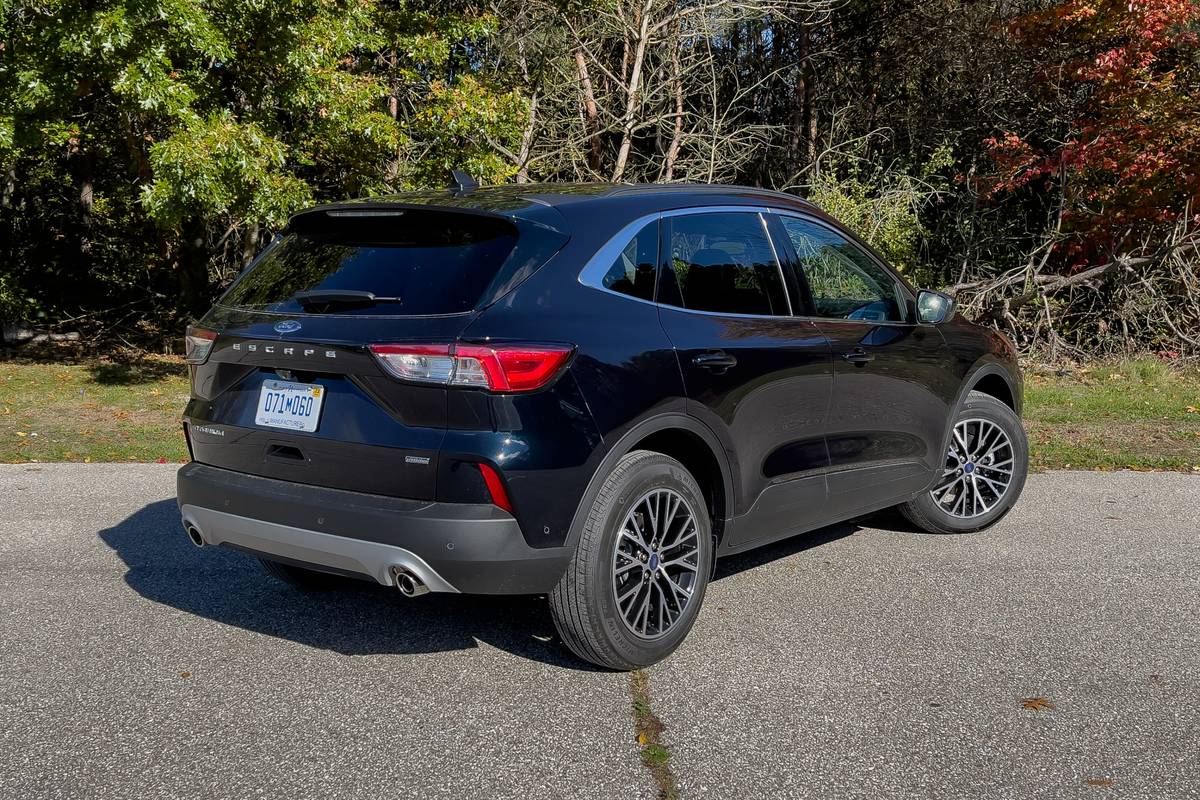 2021 Ford Escape Plug-In Hybrid | Cars.com photo by Aaron Bragman
2021 Ford Escape Plug-In Hybrid | Cars.com photo by Aaron Bragman
The Escape PHEV’s gas-electric hybrid system pairs a 2.5-liter four-cylinder engine with an electrified continuously variable automatic transmission that sends its 220 combined horsepower exclusively to the front wheels. All 155 pounds-feet of torque is available off the line, making the Escape good for absconding.
2. Balance of Power
When the hybrid system decides it doesn’t need the engine for highway cruising, it shuts it off to boost efficiency. The combo of electric and gas power is particularly well balanced for your daily commute.
3. If You Want to Go Far, Go PHEV
The Escape PHEV boasts a respectable EPA-rated 37 miles of electric-only range and 520-mile total range on a full gas tank. That’s in addition to 105 mpg-equivalent and a 40 mpg combined mpg estimate in gas-only mode — better than both the Toyota RAV4 Prime and Hyundai Tucson PHEV in pure gas mileage.
4. Fab in Cabin
 2021 Ford Escape Plug-In Hybrid | Cars.com photo by Aaron Bragman
2021 Ford Escape Plug-In Hybrid | Cars.com photo by Aaron Bragman
Interior appointments are what one might expect from an Escape, which is to say it features high-quality fits and finishes. Meanwhile, there’s a conspicuous absence of touch-sensitive controls in favor of physical buttons and knobs — which we, in turn, are passionately in favor of.
5. It’s Easy to See Out Of
A low beltline and fairly spacious greenhouse make for good front and side visibility.
6. How Much It Holds
It may carry itself like a car — but it stows stuff like an SUV. The Escape PHEV offers more than 34 cubic feet of cargo space behind the rear seats and nearly 61 cubic feet of max cargo space, according to Ford’s measurements.
7. Levels the Paying Field
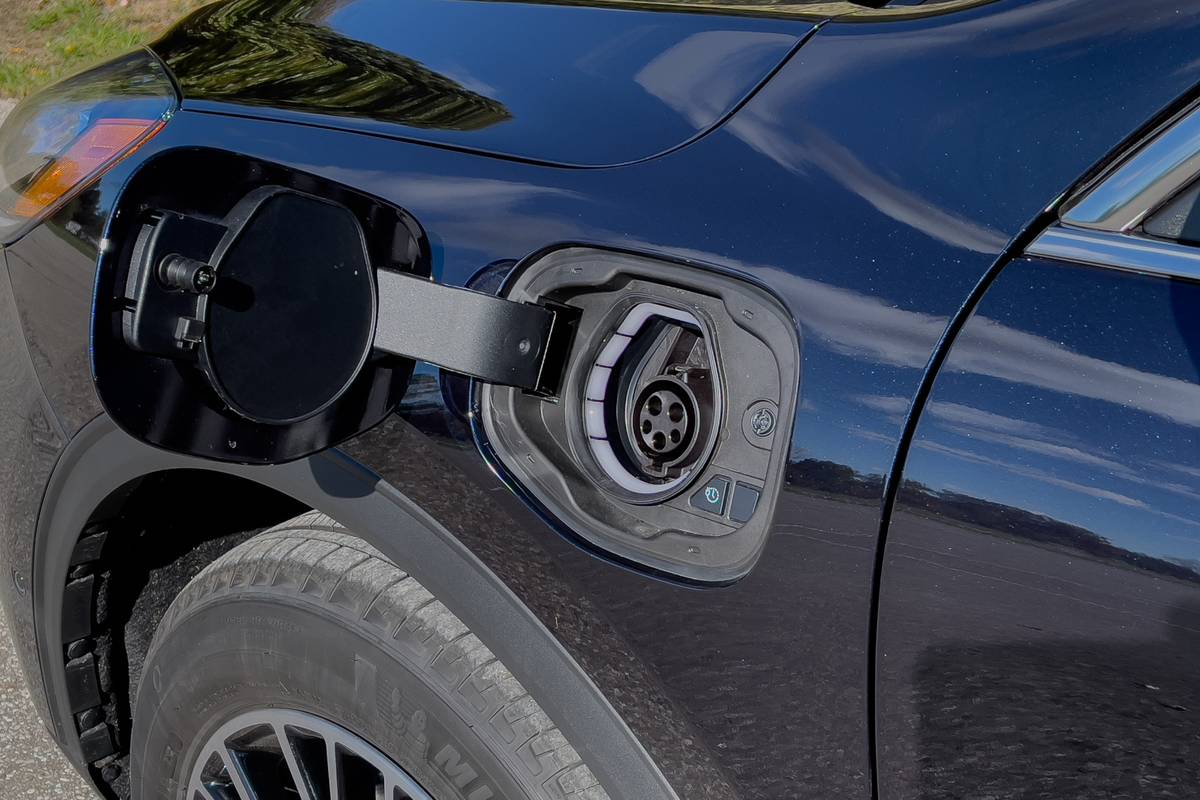 2021 Ford Escape Plug-In Hybrid | Cars.com photo by Aaron Bragman
2021 Ford Escape Plug-In Hybrid | Cars.com photo by Aaron Bragman
The plug-in hybrid powertrain certainly isn’t cheap, but at least Ford offers it on lower Escape trim levels. That includes the SE and SEL trim levels, not just the top-tier Titanium trim.
More From Cars.com:
- Shopping for a 2021 Ford Escape PHEV? Research One, Here
- Find a 2021 Ford Escape PHEV for Sale Near Your, Now
- Ford Escape: Which Should You Buy, 2021 or 2022?
- Which Cars Have Panoramic Moonroofs or Sunroofs?
- Home EV Chargers and How to Choose One
Things We Don’t
1. Anemic EV Acceleration
Don’t expect Tesla-level all-electric thrust. If you hope to remain in EV mode in order to benefit from those aforementioned mileage ratings, you’re gonna need to go easy on that pedal under your right foot.
2. Seating Comfort Could Be Better
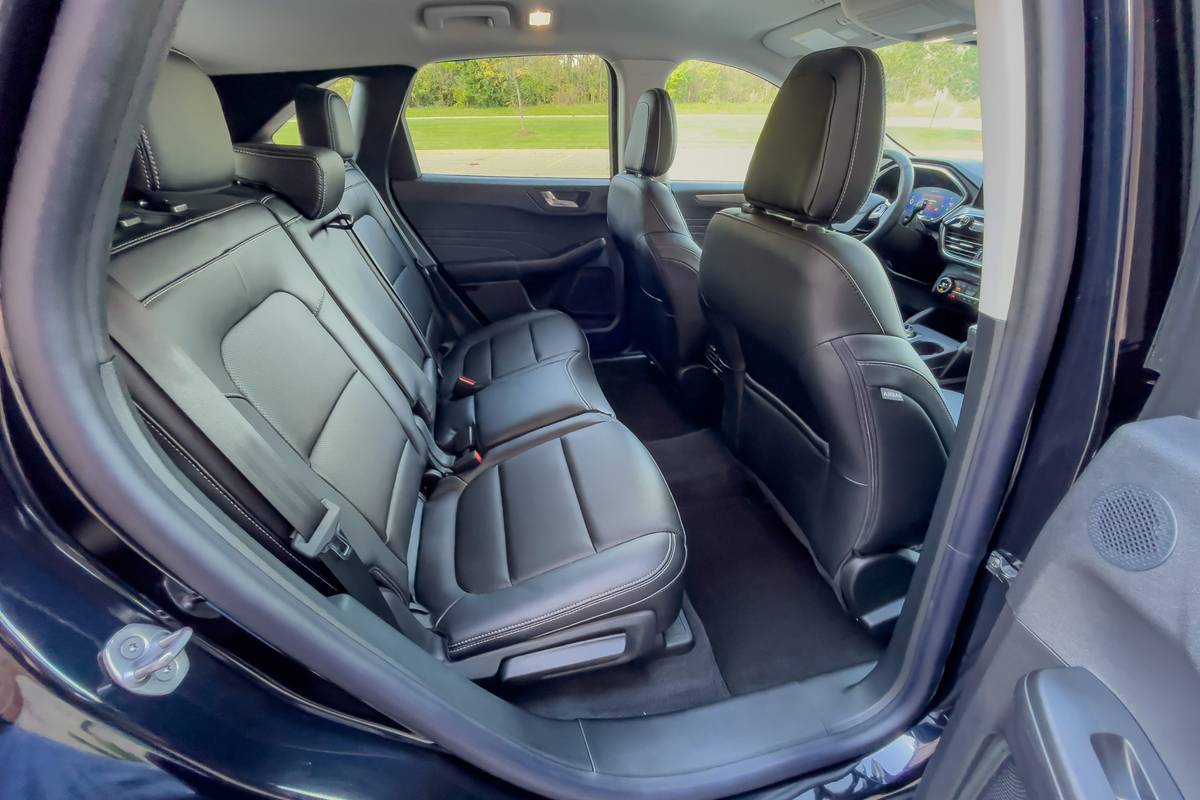 2021 Ford Escape Plug-In Hybrid | Cars.com photo by Aaron Bragman
2021 Ford Escape Plug-In Hybrid | Cars.com photo by Aaron Bragman
Bragman isn’t a huge fan, in general, of seating in Ford SUVs. In addition to the seats feeling short, backseat legroom falls short of key competitors.
3. Outlet Outlay
Opting for a PHEV instead of the conventional hybrid will cost you an extra $5,000. That’s a lot to pay for a plug.
“Unless you spend a significant portion of your operating time in your PHEV in electric mode,” Bragman reasons in his review, “you’ll be hard-pressed to overcome that initial cash outlay with the money you save on gas versus a regular Escape hybrid.”
4. EV Mode Elusive
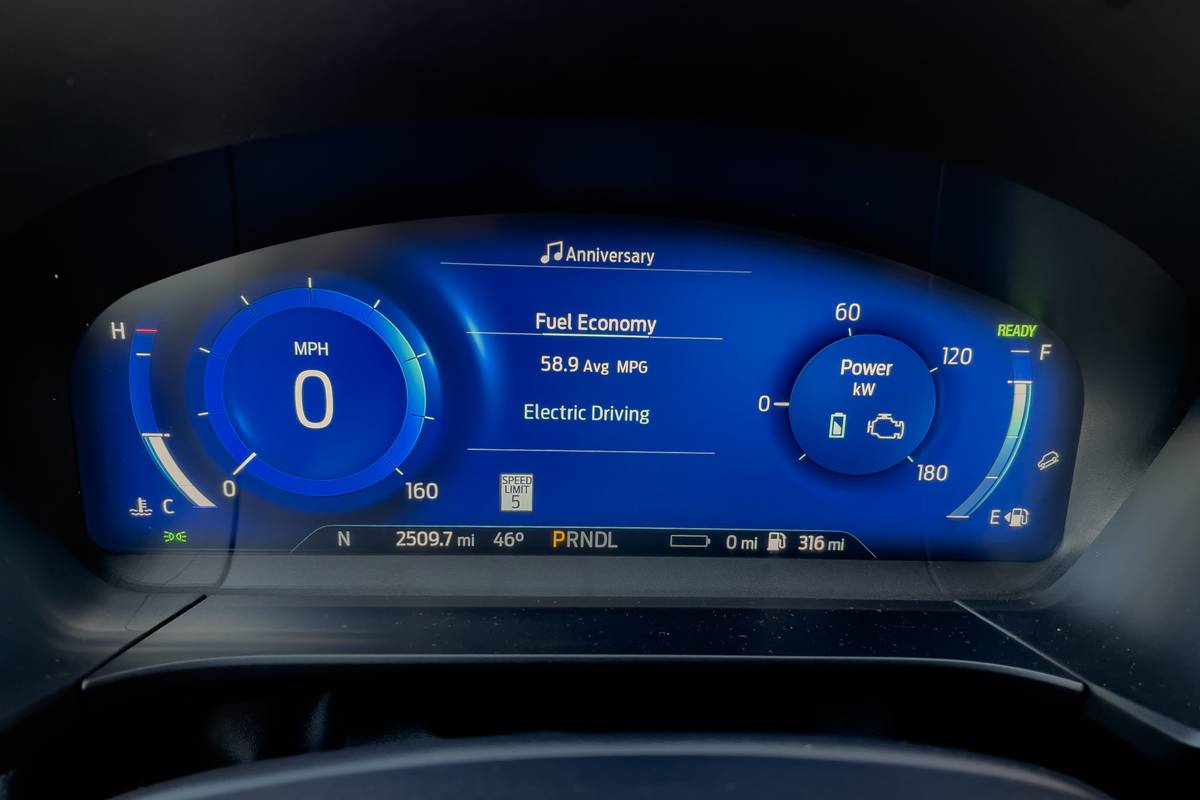 2021 Ford Escape Plug-In Hybrid | Cars.com photo by Aaron Bragman
2021 Ford Escape Plug-In Hybrid | Cars.com photo by Aaron Bragman
Bragman’s biggest complaint with the Escape PHEV — and, frankly, it should be a potential deal breaker for would-be buyers — is that it switches unilaterally from electric to gas power. The gas engine will kick in if you press too hard or too quickly on the accelerator, go too fast, drive on a slight downhill grade with a fully charged battery, use the heater, run the battery too hot or cold, shift into Low gear or are in Neutral, heed confoundingly frequent alerts to engage “normal operation,” don’t heed the alerts, haven’t driven in a while and it decides to circulate the motor oil or have a cold engine — and the litany of efficiency-eliminating annoyances doesn’t stop there.
“Simply put, the Escape Plug-In Hybrid does not reliably operate as an EV when put in EV mode,” Bragman writes in his review. “It fires up the engine so often, it made me wonder why it even has an EV mode given the engine has to run that frequently in order to maintain optimal performance and efficiency.”
Related Video:
2020 Ford Escape Review — Cars.com
The Ford Escape is a popular model in a popular class of compact SUVs, and Ford has redesigned it for the 2020 model year to mark its fourth generation. We got a chance to drive both the Escape and Escape Hybrid for the first time in Kentucky.
Cars.com’s Editorial department is your source for automotive news and reviews. In line with Cars.com’s long-standing ethics policy, editors and reviewers don’t accept gifts or free trips from automakers. The Editorial department is independent of Cars.com’s advertising, sales and sponsored content departments.





